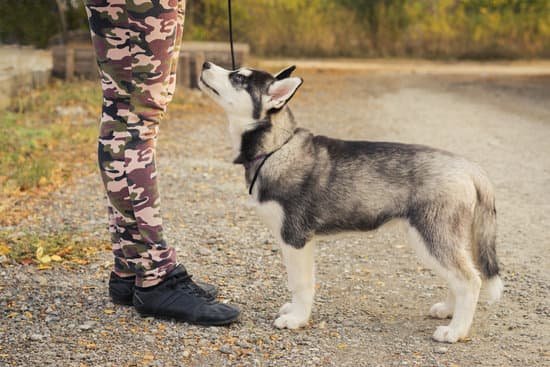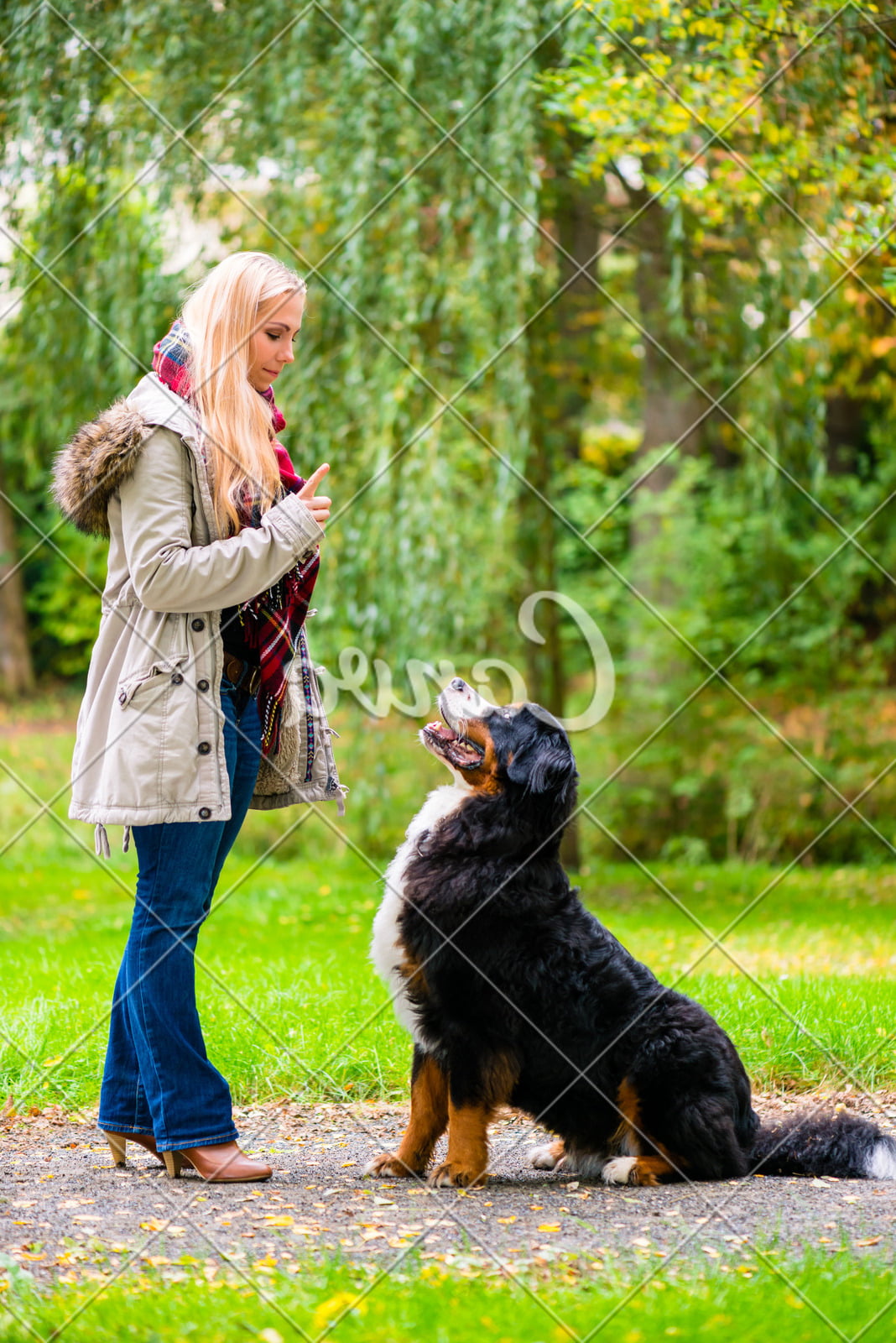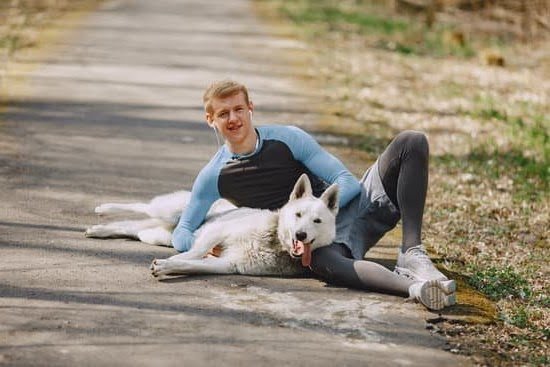Deaf dogs, just like their hearing counterparts, are incredibly intelligent and loving pets. However, training a deaf dog requires a unique approach to communication and understanding. In this article, we will delve into the essential aspects of training a deaf dog, focusing on how to effectively communicate with them using visual cues and body language.
One of the most crucial aspects of training a deaf dog is establishing a reliable communication system. Hand signals and body language play a vital role in conveying commands and building a strong bond with your furry companion. By creating consistent cues and gestures, you can ensure that your deaf dog understands what is expected of them during training sessions.
Positive reinforcement training techniques are particularly effective when it comes to teaching a deaf dog. By using rewards such as treats or praise, you can motivate your pet to learn new behaviors and commands. It’s essential to be patient and consistent in your training approach to help your deaf dog succeed and thrive in various environments.
The Importance of Visual Communication
Deaf dogs have their own unique way of perceiving the world around them, relying more on visual cues and signals than auditory commands. This makes understanding the importance of visual communication crucial when it comes to training a deaf dog.
Hand signals and body language play a significant role in conveying instructions and building a strong connection with your furry companion. By integrating these visual cues into your training sessions, you can effectively communicate with your deaf dog and help them learn new behaviors.
One key aspect of using hand signals and body language to train a deaf dog is consistency. It’s essential to establish clear, distinct gestures for different commands or actions that you want your dog to perform. Consistency in using the same signals helps your deaf dog associate specific movements with certain behaviors, making it easier for them to understand what is expected of them.
Additionally, make sure to use positive reinforcement techniques such as treats, toys, or praise when they respond correctly to a signal. This will motivate your dog and strengthen the bond between you as you navigate through training sessions.
When incorporating hand signals and body language into training sessions, keep in mind that each deaf dog may respond differently to certain gestures. It’s important to observe your dog’s reactions closely and adjust your communication style accordingly. Some dogs may be more responsive to large, exaggerated movements, while others may prefer subtle cues. By being patient and observant, you can tailor your visual communication techniques to best suit your deaf dog’s individual needs and preferences.
| Aspect | Importance |
|---|---|
| Consistency | Establishing clear, distinct gestures for different commands |
| Positive Reinforcement | Motivating the deaf dog with treats, toys, or praise |
| Adaptability | Tailoring communication style based on individual responses |
Establishing a Communication System
Deaf dogs can lead happy, fulfilling lives with proper training and communication strategies in place. Creating a consistent and effective way to communicate with a deaf dog is crucial in building a strong bond and fostering understanding between you and your furry companion. Here are some tips for establishing a communication system that works well for both you and your deaf dog:
- Use visual cues: Since verbal commands are not effective with deaf dogs, incorporating hand signals and body language is key. Start by assigning specific signals for basic commands such as sit, stay, come, and down. Consistency is key, so make sure to use the same signals each time you give a command.
- Create a routine: Deaf dogs thrive on routine and structure. Establishing a daily routine with consistent mealtimes, play sessions, and training sessions can help your deaf dog feel more secure and understand what is expected of them.
- Implement touch cues: In addition to visual cues, incorporating touch cues can also be helpful when communicating with a deaf dog. For example, gently tapping your deaf dog on the shoulder can signal them to look at you or get their attention.
Training a deaf dog may require patience and persistence, but it can be incredibly rewarding as you see your furry friend learn and grow. By establishing clear communication channels through visual cues, routines, and touch cues, you can effectively communicate with your deaf dog and build a strong bond based on trust and understanding throughout the training process. Remember that each deaf dog is unique, so be prepared to adapt your communication system based on their individual needs and preferences.
Positive Reinforcement Training
Using Treats as Rewards
One of the most common forms of positive reinforcement when training a deaf dog is using treats as rewards. It is important to find high-value treats that your dog loves and responds well to. These treats should be small yet delicious to keep your dog motivated throughout the training sessions. Whenever your deaf dog successfully follows a command or exhibits a desired behavior, immediately reward them with a treat.
Praise and Affection
In addition to treats, praise and affection play a significant role in positive reinforcement training for deaf dogs. Since they cannot hear verbal praise, it is essential to use physical gestures such as gentle pats, belly rubs, or even signing “good job” enthusiastically with hand signals. Deaf dogs are incredibly perceptive to human body language and facial expressions, so expressing your approval through positive gestures will reinforce their good behavior effectively.
Consistency Is Key
Consistency is crucial when using positive reinforcement training with deaf dogs. Establish clear hand signals for each command or behavior you want to teach your dog and make sure everyone in the household follows the same cues consistently.
By being consistent in your communication methods and rewarding desired behaviors every time they occur, you will help your deaf dog understand what is expected of them and reinforce those behaviors over time. Remember that patience and repetition are key components of successful positive reinforcement training for deaf dogs.
Overcoming Challenges
Deaf dogs may face unique challenges when it comes to training, but with the right approach and tools, these obstacles can be overcome successfully. One common challenge that owners of deaf dogs encounter is the difficulty in getting their attention during training sessions.
Since verbal cues are not an option, it is crucial to establish a visual communication system using hand signals or body language. Consistency is key in this process, as the deaf dog will rely on these visual cues to understand what is expected of them.
Another obstacle that may arise when training a deaf dog is their inability to hear potential dangers in their environment, such as approaching cars or other animals. This lack of awareness can put them at risk of accidents or injuries.
To address this challenge, owners should take extra precautions to ensure the safety of their deaf dog, such as keeping them on a leash or in a secure area when outdoors. Additionally, teaching them specific visual cues for caution or danger can help alert them to potential risks.
Patience and understanding are essential when overcoming challenges while training a deaf dog. It may take some time for them to adjust to the new communication methods and learn desired behaviors. Consistent training sessions with positive reinforcement techniques can help build trust and strengthen the bond between the owner and their deaf dog. By staying patient, persistent, and loving throughout the training process, owners can effectively address obstacles and help their deaf dog thrive.
| Common Training Challenges | Overcoming Strategies |
|---|---|
| Difficulty in getting attention without verbal cues | Establishing visual communication through hand signals and body language |
| Lack of awareness of environmental dangers due to deafness | Taking safety measures like using leashes and teaching specific cues for caution |
| Time needed for adjustment to new communication methods | Consistent positive reinforcement training sessions with patience and love |
Building Trust and Bonding
Deaf dogs may require a different approach to training compared to hearing dogs, but building trust and bonding with them is just as essential. Implementing the right techniques can help establish a strong connection with your deaf dog, creating a solid foundation for effective communication and training. By understanding their unique needs and capabilities, you can develop a special bond that will benefit both you and your furry companion.
Visual Communication
Visual communication plays a crucial role in training a deaf dog, as they rely on cues such as hand signals and body language to understand commands and expectations. When starting training sessions, it’s important to use clear and consistent hand signals paired with positive reinforcement to reinforce desired behaviors. This approach helps the deaf dog associate specific gestures with actions or commands, facilitating better communication between the two of you.
Patience and Consistency
One of the key elements in building trust and bonding with a deaf dog is patience and consistency. Training a deaf dog may take longer than training a hearing dog due to their reliance on visual cues, so it’s important to remain patient throughout the process.
Consistent training sessions that are short, frequent, and positive can help the deaf dog understand what is expected of them and strengthen the bond between you. Remember that every step forward, no matter how small, is progress towards better communication and trust.
Engagement and Play
Engaging in interactive playtime with your deaf dog is another effective way to build trust and bonding. Incorporating games like fetch or hide-and-seek not only provides mental stimulation but also fosters a sense of companionship between you and your furry friend.
Through these activities, you can learn more about your deaf dog’s personality, preferences, and strengths while nurturing your relationship outside of formal training sessions. The time spent together in fun-filled moments can further solidify your bond and enhance mutual trust, making training sessions more enjoyable for both parties.
Safety Measures
Training a deaf dog requires special attention to safety measures to ensure their well-being during training sessions and in different environments. One of the most important safety precautions for a deaf dog is to always keep them on a leash or within a fenced area, especially in unfamiliar surroundings. Without the ability to hear commands or warnings, it is crucial to prevent them from wandering off and getting into dangerous situations.
In addition to physical barriers, using visual cues and signals can help keep a deaf dog safe. Implementing hand signals for basic commands like sit, stay, and come can guide your dog effectively without relying on verbal cues. It is also beneficial to establish eye contact with your deaf dog frequently during training sessions to maintain their focus and reinforce communication between you both.
When introducing a deaf dog to new environments or experiences, it is essential to gradually acclimate them while closely monitoring their reactions. This approach allows you to gauge their comfort level and adjust accordingly to prevent any stress or anxiety. By being attentive and proactive in managing their surroundings, you can help your deaf dog navigate different settings confidently while prioritizing their safety at all times.
Seeking Professional Help
Training a deaf dog can be a unique challenge for pet owners, but it is definitely manageable with the right guidance and support. While many individuals are able to successfully train their deaf dogs on their own, there may come a time when seeking professional help becomes necessary. Here are some scenarios in which consulting a professional dog trainer or behaviorist can be beneficial:
- Complex Behavioral Issues: If your deaf dog is displaying complex behavioral problems such as aggression, fearfulness, or severe anxiety, seeking the expertise of a professional can help address these issues effectively.
- Difficulty with Training Progress: If you find yourself struggling to make progress in training your deaf dog or feel stuck in a particular training task, a professional trainer can provide insights and strategies to overcome these challenges.
- Specialized Training Needs: Deaf dogs may require specialized training techniques or approaches that go beyond basic obedience commands. A professional with experience in training deaf dogs can tailor a program to meet your pet’s specific needs.
When considering consulting a professional for help with training your deaf dog, it’s important to do thorough research to find a qualified and experienced individual who has knowledge working with deaf dogs. Look for trainers or behaviorists who use positive reinforcement methods and have a good understanding of canine communication. Additionally, seek recommendations from other pet owners or veterinarians who have experience with training deaf dogs.
Remember that seeking professional help doesn’t mean you’ve failed as a pet owner. It simply shows your commitment to providing the best possible care and training for your deaf dog. With the right guidance and support, you can overcome any obstacles and build a strong bond with your furry companion.
Conclusion
Training a deaf dog requires a different approach compared to training a hearing dog. Understanding the unique needs and abilities of deaf dogs is crucial in providing them with the necessary tools for success. Visual communication through hand signals and body language plays a vital role in training, as it serves as the primary way to convey commands and praise to the dog. Establishing a consistent communication system that your deaf dog can easily understand is key to effective training.
Positive reinforcement training is one of the most effective methods for teaching a deaf dog. Using rewards and praise motivates them to learn and respond to commands positively. Despite facing certain challenges along the way, such as their inability to hear verbal cues, patience, consistency, and love are essential in overcoming obstacles during the training process. By building trust and bonding with your deaf dog through training activities, you can strengthen your relationship while also enhancing their obedience skills.
Ensuring the safety of your deaf dog during training sessions and in various environments should be a top priority. Implementing safety measures will prevent accidents and keep them out of harm’s way. In cases where additional assistance is needed, seeking professional help from a specialized dog trainer or behaviorist can provide valuable guidance and support. Ultimately, training a deaf dog requires dedication, understanding, and compassion to help them thrive and lead fulfilling lives alongside their human companions.
Frequently Asked Questions
How Do You Discipline a Deaf Dog?
Discipline for a deaf dog relies heavily on visual cues and positive reinforcement. Use hand signals, facial expressions, or light vibrations to communicate disapproval for unwanted behavior. Consistency and patience are key in reinforcing discipline with a deaf dog.
How Do You Tell a Deaf Dog No?
Communicating “no” to a deaf dog involves using clear hand signals or body language to convey the message effectively. For example, you can use a stern facial expression, point your finger in a firm manner, or use other visual cues that the dog understands as a signal of disapproval.
It’s essential to be consistent and persistent in reinforcing this message.
Is It Difficult to Train a Deaf Dog?
Training a deaf dog can present challenges but is definitely possible with patience, dedication, and the right techniques. Visual cues, hand signals, or even vibrations can be used instead of verbal commands.
Positive reinforcement methods work well with deaf dogs as they respond well to rewards for good behavior. Building trust and understanding through consistent training will help make the process smoother despite the initial difficulties.

Welcome to the blog! I am a professional dog trainer and have been working with dogs for many years. In this blog, I will be discussing various topics related to dog training, including tips, tricks, and advice. I hope you find this information helpful and informative. Thanks for reading!





